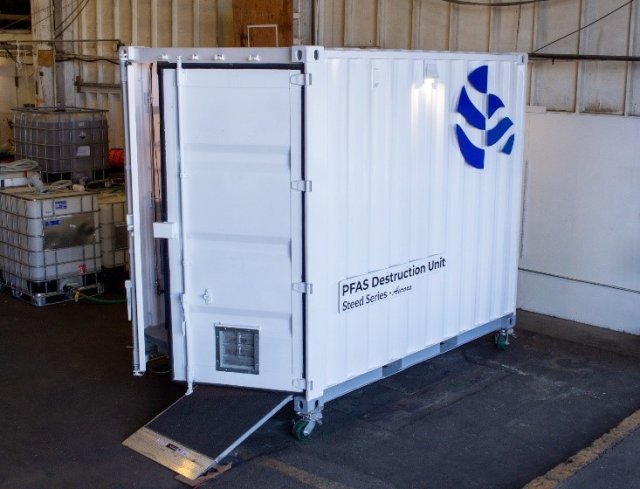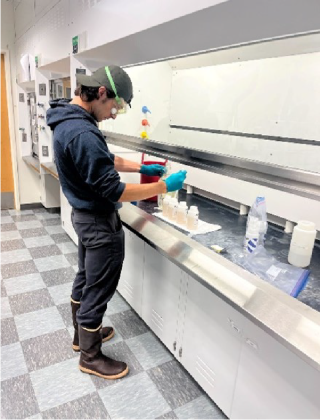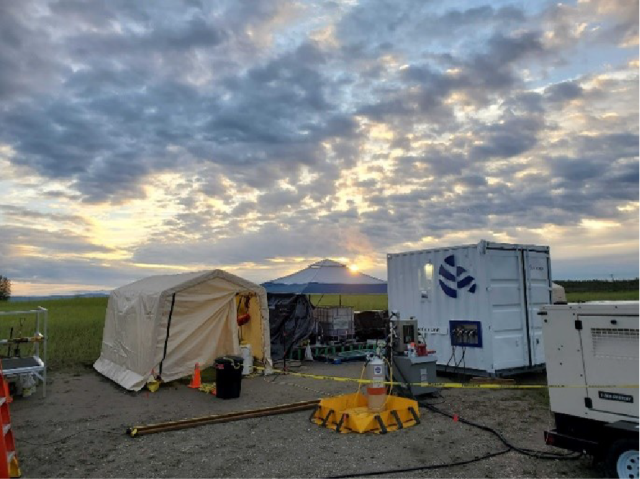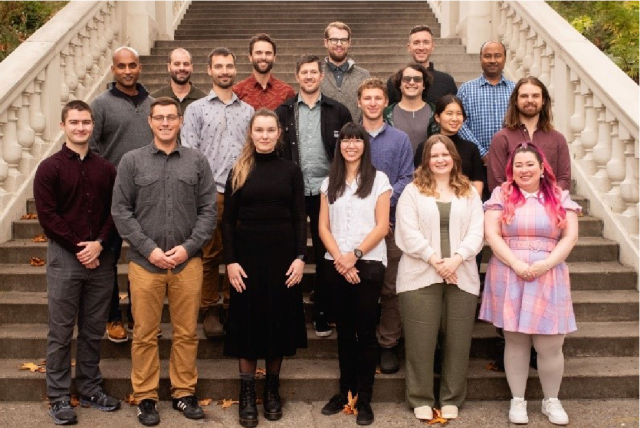EPA SBIR-Funded Technology Provides a Solution for PFAS Destruction for Industrial Wastewater Producers
Per- and polyfluoroalkyl substances (PFAS) are synthetic chemicals commonly used in a wide range of products and applications, such as non-stick coatings, firefighting foams, and semiconductor manufacturing.
Recently, there has been a significant shift away from PFAS use, in addition to increased efforts to develop effective PFAS treatment and destruction technologies. Researchers and industries are advancing innovative methods to remove PFAS from drinking water and landfill leachate, safely dispose of legacy firefighting foams, and treat contaminated industrial wastewater. These efforts aim to accelerate the elimination of PFAS and reduce their long-term environmental impact.

Given EPA’s commitment to addressing PFAS contamination, the agency has supported innovative approaches through its Small Business Innovation Research (SBIR) program. Aquagga, Inc., a small business focused on developing advanced PFAS destruction solutions, has received two SBIR awards. This funding reflects EPA’s emphasis on fostering the development of technologies that can address critical environmental challenges. By supporting small businesses like Aquagga, Inc., EPA aims to advance innovative solutions for effectively managing PFAS contamination, in alignment with its mission to protect human health and the environment.
Since 1982, EPA's statutorily mandated SBIR program (i.e., Small Business Development Act of 1982, SBIR and STTR Extension Act of 2022) has supported small American businesses with over 1700 awards to more than 330 industry-sponsored projects in 49 states. The SBIR program provides a mechanism for EPA to award funding to small businesses to commercialize technologies that support its mission. The program seeks innovative technologies that offer new approaches rather than incremental improvements of existing technologies. Each year, EPA funds SBIR projects in a phased approach. Phase I consists of six-month contracts of up to $100,000 for “proof of concept” of proposed technologies. Small businesses that have received a Phase I award can apply for a Phase II funding of $400,000 to further develop and commercialize their technology. Aquagga’s Phase II technology development award enables effective cradle-to-grave remediation of PFAS-contaminated sites, directly supporting EPA's mission.

The PFAS Destruction Problem
Destroying PFAS in the environment presents a complex challenge due to multiple factors, including their movement through various pathways, their persistent chemical structure, and the wide diversity of PFAS. While cleanup efforts address contamination, effective destruction technologies are essential for permanently removing PFAS. The exceptionally strong carbon-fluorine (C-F) bond makes PFAS challenging to destroy, as conventional destruction methods (e.g., chemical oxidation, lower temperature thermal treatment, biological processes) struggle to break these bonds. Many methods either fail to transform PFAS or only partially do so, potentially creating shorter-chain, more mobile PFAS or greenhouse gases.
The complexity is compounded by the diversity of PFAS, which includes single molecules and polymers and chemicals that are gases, liquids, and solids at room temperature. While some legacy compounds like PFOS and PFOA can be removed using technologies such as granular activated carbon (GAC), shorter-chain PFAS are more difficult to capture and require different treatment approaches. For industrial wastewater producers, addressing short-chain and ultra-short chain PFAS remains a significant challenge, as effective removal and destruction technologies are still under development.
Initial Promise and EPA Challenge
The hydrothermal alkaline treatment (HALT) process, developed at the Colorado School of Mines by Drs. Timothy Strathmann (a technical advisor to Aquagga), Christopher Higgins, Boron Wu, and Shilai Hao, has proven effective in breaking down various types of PFAS, including short-chain and ultra-short-chain compounds. “While studying hydrothermal waste-to-biofuel applications, we found that these same conditions could be highly effective for breaking C-F bonds and destroying PFAS,” says Dr. Strathmann. “Academic-industry collaboration is critical to translating these promising ideas from the lab bench to the field at scales that are relevant for addressing this ever-expanding problem.” In 2020, Aquagga began collaborating with the Colorado School of Mines team to commercialize the HALT technology through an exclusive license to the HALT patent.

Building on these advancements and knowledge, Aquagga applied to EPA’s 2020 Innovative Ways to Destroy PFAS Challenge and the EPA’s SBIR Phase I program. Aquagga’s submission was selected as the winning solution to the challenge, and the company also successfully secured SBIR Phase I funding from EPA. These successes allowed Aquagga to demonstrate HALT’s effectiveness in destroying over 99.9% of PFAS in real wastewater streams, which led to an EPA SBIR Phase II award in 2022. The current HALT team includes 18 core Aquagga members and collaborators from the Colorado School of Mines and the University of Washington.
Building a System
In 2022 and 2023, the Aquagga team focused on scaling the HALT process towards a commercial product. With EPA SBIR Phase II funding, they developed a containerized PFAS destruction system capable of processing 5 to 10 gallons per hours of highly concentrated PFAS wastewater. Over two years, Aquagga’s “Steed Series” HALT system came to life, enhancing HALT’s technical and commercial maturity.

Closing the Loop
In 2022, Aquagga partnered with the 3M Company to evaluate HALT for destroying PFAS in complex, highly concentrated industrial wastewater. Following bench testing in late 2022, Aquagga deployed the HALT system, constructed with EPA SBIR Phase II funding, to 3M’s facility in 2024 for a pilot demonstration. Over the course of two weeks, Aquagga consistently surpassed the PFAS destruction targets, successfully processing over 1,000 gallons of wastewater through the HALT system.
Through EPA SBIR funding, innovative businesses like Aquagga are turning groundbreaking ideas into solutions that make a lasting environmental impact EPA’s SBIR Program has funded other technologies to test and treat for PFAS. By supporting America’s small businesses, EPA is helping to drive sustainable innovation and protect human health and the environment.
Learn More About the Science
